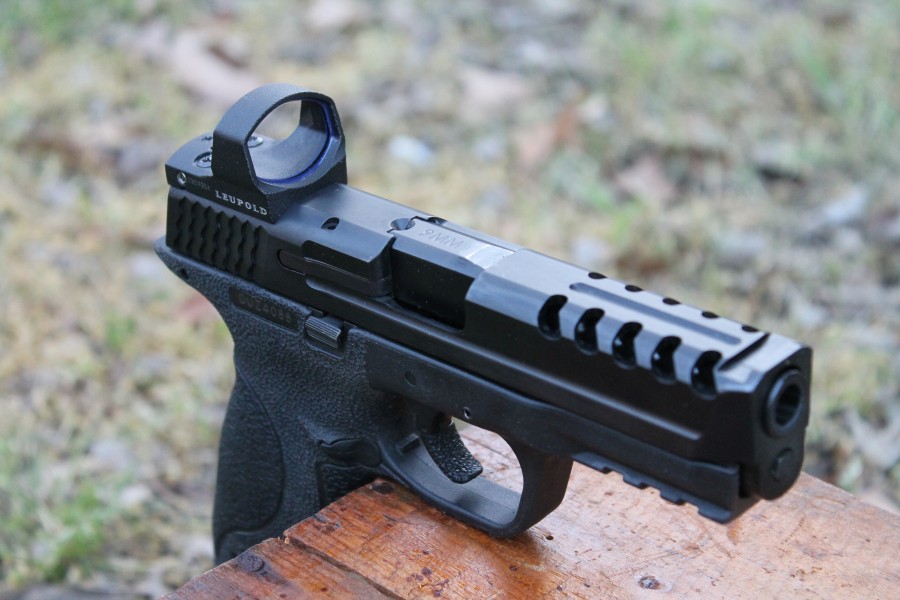 Every now and then, you get a chance to try something outside your skill set, pay grade, or general place in life. Like the time I drove a 911 Turbo or shot steel at 1000 yards. Sometimes, it’s purely luck. Others, you’re just in the right place at the right time with the right gear. The Apex Tactical RDS Mount is definitely in the latter category. I just happened to have a new-to-me M&P that I purchased from Nick Leghorn, and a Leupold DeltaPoint that the kind folks from Beaverton, Oregon loaned me. And like all good things, the third part fell into place when Scott Folk at Apex shot me an email to let me know that they were now doing red dot sight (RDS) mounts using the DeltaPoint and M&P slides . . .
Every now and then, you get a chance to try something outside your skill set, pay grade, or general place in life. Like the time I drove a 911 Turbo or shot steel at 1000 yards. Sometimes, it’s purely luck. Others, you’re just in the right place at the right time with the right gear. The Apex Tactical RDS Mount is definitely in the latter category. I just happened to have a new-to-me M&P that I purchased from Nick Leghorn, and a Leupold DeltaPoint that the kind folks from Beaverton, Oregon loaned me. And like all good things, the third part fell into place when Scott Folk at Apex shot me an email to let me know that they were now doing red dot sight (RDS) mounts using the DeltaPoint and M&P slides . . .
My M&P already had the Apex Trigger Kit it needed, so I only had to send the slide off for a little machining. Scott and I bounced a few emails back and forth about what I wanted, and we were off to the races.
Specifically, I wanted just the RDS mounted and per Scott’s suggestion, I had him remove material from the front of the slide to cut down on overall weight. And because — I’ll admit it — I thought it would look wicked cool. I had the option to add a rear sight dovetail for a bit more money and I’m now regretting not doing it. But more on that later.
Six weeks after I sent the slide and RDS off to Scott, it arrived back at my door. The work was actually done within about three weeks, but it had to be sent off to get recoated, and then SHOT Show happened. It was a long six weeks, but totally worth it in the end.
The pictures really don’t do justice to how good this gun looks in the flesh. The machining is absolutely flawless. In fact, Scott cut some material from the side of the slide that you can see as shiny metal in the picture above. You can’t even tell that there used to be metal there. The cuts in the slide are all symmetrical and provide a nice gripping surface for reloading, should you ever choose to grab your gun by the front.
As soon as my schedule allowed, I was at the range happily burning through 9mm parabellum. Within about ten shots, I had the sight adjusted to hit two inches high at 7 yards. At some point, it dawned on me that this gun is now way over my head. I’m not an open class shooter by any stretch of the imagination. All of Scott’s hard work might be wasted on a total noob who had no idea what he had in his hands. So I did the only logical thing and turned it over to Master Class shooter, Karl Rehn to give it a go. His thoughts below:
The time I spent evaluating this pistol was the second time I had looked at an M&P with a red dot mounted in place of the rear sight. Unlike the gun I used a year ago, this pistol had no traditional front sight. This particular pistol was a 4.25″ (standard) M&P, set up with the 2.5 lb Apex competition trigger kit. To me that seemed an odd combination, since the 4.25″ model was not as well suited to competition as the 5″ Pro model, and the 2.5 lb competition trigger was not appropriate for a practical carry gun.
My primary interest in the pistol was as a potential “match gun” for the low light live fire shooting competition conducted every year as part of the annual Polite Society Tactical Conference at Tom Givens’ Rangemaster facility in Memphis. The match typically consists of some surprise stages using reactive 3-D targets (which only fall when hit in the 6″ center plate or the much smaller head plate), and some timed fire standards shot with a smaller “A Zone” than typical IPSC or IDPA targets. To evaluate the pistol for that purpose, I ran a 50 round low light shooting test that included 3, 7 and 15 yard presentations as well as strong-hand-only and weak-hand-only drills. I ran the drill with the red dot pistol, as well as a standard iron sighted M&P, and an M&P equipped with a Crimson Trace lasergrip insert.
What I found was essentially what I found the last time I evaluated a similarly configured pistol: For two handed shooting at 7 yards and beyond, the red dot pistol is quick and easy to use. For targets closer than 7 yards, particularly targets shot using one hand, picking up the red dot was quite a bit slower and more difficult than picking up iron sights or using the laser. For this type of shooting I found the laser to be the easiest to use.
My input on the issue isn’t radically different from others who have evaluated the slide-mounted red dot sights on pistols in the past: backup iron sights should be considered ‘essential’, because they provide a coarse way to align the pistol when the presentation isn’t perfect and speed is crucial.
And that right there is why I’m kicking myself for not having Scott cut a rear sight dovetail. Without a backup set of irons, this gun is relegated to fancy range toy status. And that’s totally fine.
If you’ve never used an RDS-equipped pistol, I highly recommend it. That little red dot does not lie, and when it comes to tracking your your aim through the trigger squeeze, you’ll be very surprised to see see how much you can learn about the crucial milliseconds before the shot breaks. This holds true more than ever in this ammo-restricted world. This gun is now my default dry fire practice gun.
Specifications: Apex Tactical RDS Mount
- Available Guns: M&P series of pistols
- Time: 6 weeks total +/- a week depending on the current workload
- Finish: Melonite
- Price: $230
- Sight Installation – $110
- Cocking serrations – $50
- Melonite coating – $50
- Shipping and Handling – $20
Ratings (out of five stars):
Fit & Finish * * * * *
Having never run a mill or a lathe, I’m completely in the dark on how you could get such a smooth finish, but the guys at Apex have done it. There are zero machining marks, dings, or other marks that would indicate that this is anything but a factory modification. My slide came back with the RDS mounted, and tightly at that.
Function * * * * *
I only ran a few hundred rounds through this M&P before I sent it off, but I experienced zero failures to fire, feed, or eject once I got the gun back from Apex. I utilized everything from cheap steel Wolf to high end defensive ammo without a hiccup.
Overall Rating * * * * *
We haven’t gotten a chance to put our hands on the new M&P C.O.R.E. gun yet, but if you’ve been considering mounting a RDS on your M&P, I can’t recommend Apex highly enough. Their craftsmanship is top notch, the turnaround is quick given the work being done, and the price is very right.

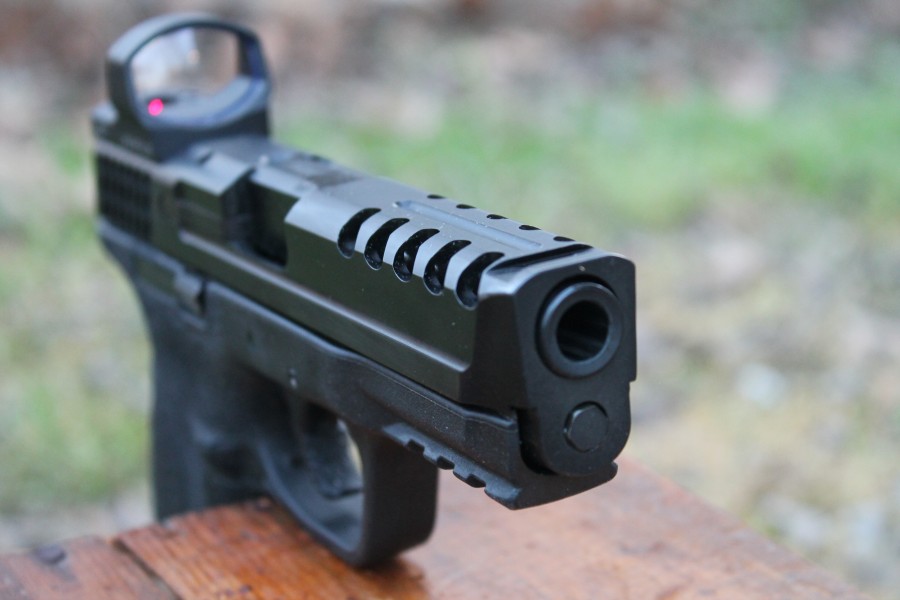
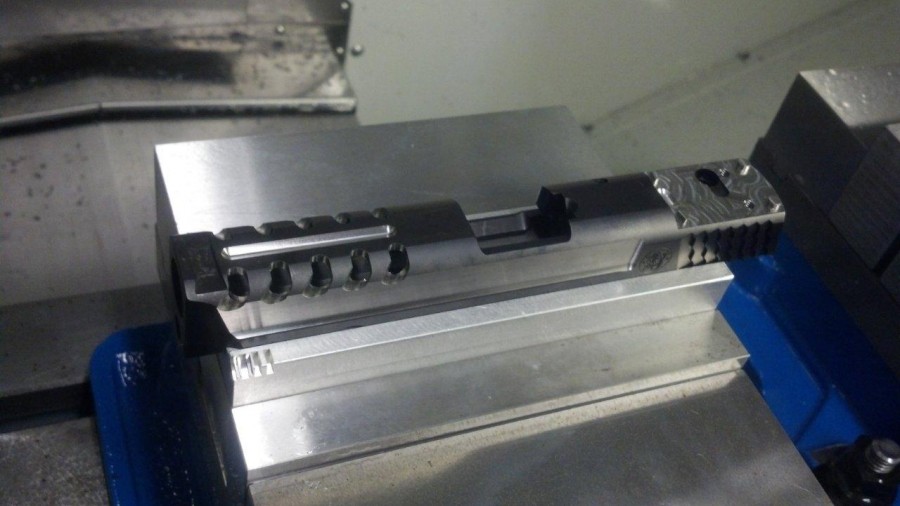
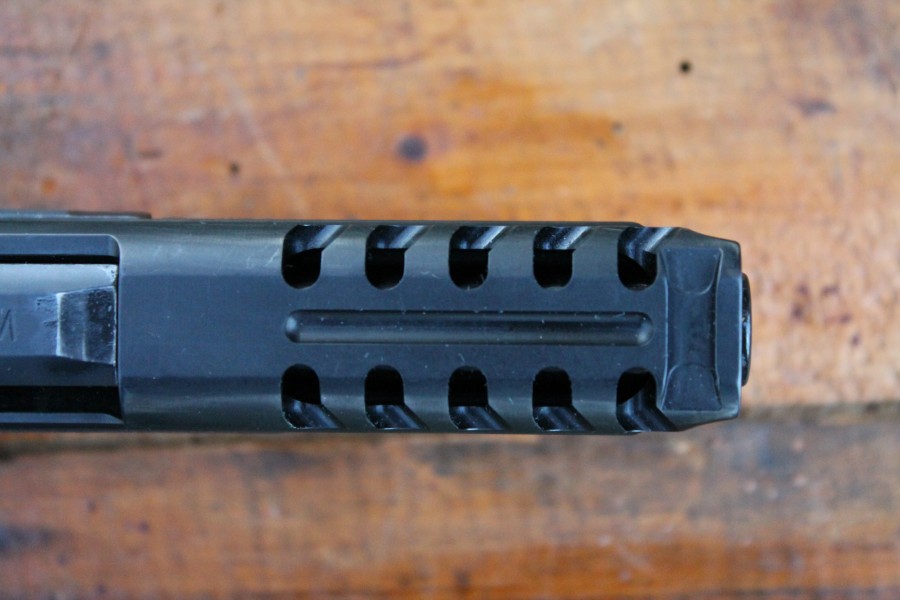
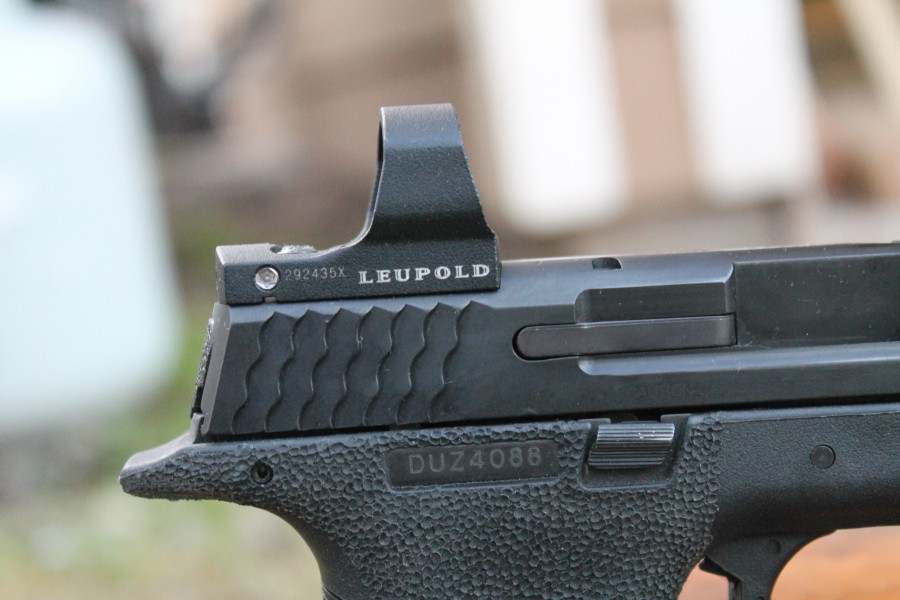
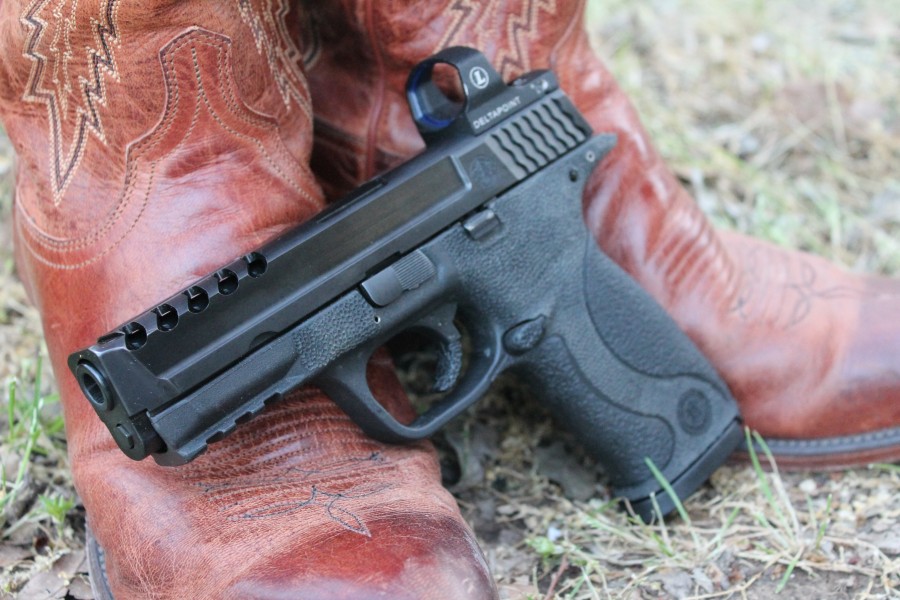

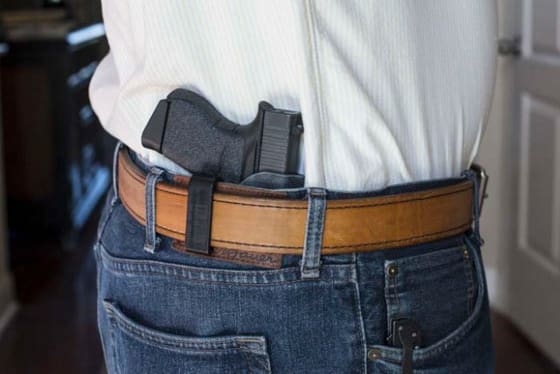

> Like the time I drove a 911 Turbo
At first glance, I thought you wrote “1911 Turbo”. That‘s a gun I’d want.
“backup iron sights should be considered ‘essential’, because they provide a coarse way to align the pistol when the presentation isn’t perfect and speed is crucial.”
This.
You don’t need sights to do this, especially on a semi-auto.
Jim Cirillo used to tape over the sights on semi-autos to teach students how to get fist-sized groups at 10 yards very rapidly… you just look at the rear profile of the gun and you don’t want to see the sides or top profile of the slide. Stuff it out there and pull the trigger.
What was formerly known as “instinctive point-n-shoot”.
BKA, ‘you don’t need/use sights in a close-range firefight’….
A properly set up RDS pistol and a solid point shooting skill set are a perfectly complementary pair, and the suppressor sights in co-witness actually can assist in point shooting besides serving their basic and essential purpose outside of point shooting ranges.
Call me crazy, but I’ve never felt a pull to own a handgun with fancy sights like that. Honestly, I just ain’t good enough of a shot yet, and won’t be for a long time.
You might as you get older or if your eyes age. I never used to find a need for optical sights on a handgun… and this year, I think I’m going to start.
It helps a lot even if you aren’t a good shot. Also it helps tremendously with dry fire.
damn Tyler, that looks beautiful. I swear that one of these days my M&P 45 is getting an RDS and some suppressor sights on it.
Beautiful, but definitely a range toy.
I’d like to have a competition gun with a slide-mounted RDS, but I would never skip the iron sights. Ever. Batteries go dead, electronics fail, glass breaks — hell, something as simple as a corroded battery contact can take an RDS out of the game.
Also, the comments about iron sights enabling fast, rough alignment on target resonated with me. If this were my gun, I’d get a tall front sight reinstalled in that empty dovetail even if my only rear-sight option were a spot of paint on the back of the RDS housing.
+1
“I’d like to have a competition gun with a slide-mounted RDS, but I would never skip the iron sights.”
Feel the same. Iron sights are proven technology, and worst comes to worst, they’ll probably be working in just at any situation… compared to the number of things that can go wrong with a RDS.
“Having never run a mill or a lathe, I’m completely in the dark on how you could get such a smooth finish, but the guys at Apex have done it. There are zero machining marks, dings, or other marks that would indicate that this is anything but a factory modification. My slide came back with the RDS mounted, and tightly at that.”
It’s simple gunsmithing. Take off the worst of the mill marks with a file and finish with polishing paper or polishing stones and oil.
I believe they use Wire EDM machining which is dark magic as far as I’m concerned.
In your picture above with the slide in a vise, that’s not on an EDM machine. That appears in the background to be a bed mill (from looking at the way covers). You can see machining marks on the slide where they’ve milled the level down for the sight mounting. All you have to do in order to remove those mill marks in your picture above is a a couple strokes of a file (by someone who knows how to drive a file) and then use some polishing paper. It would go much faster to mill the part and polish it than to use EDM.
EDM is exactly what the letters stand for: using electrical discharge (“sparking”) to erode metal around an electrode. In “wire” EDM machines, you energize a wire which is cutting into the workpiece, which is submerged in a dielectric fluid bath. “Sinker” EDM uses an electrode which has been cut to present a particular size/profile into the workpiece, and then the workpiece is sunk into the bath and the electrode is brought into near-contact with the workpiece, which is then eroded by the current in the shape of the electrode.
While EDM gets you nice surface finishes (but not as good as polished) and allows you to do some shapes/contours and inside cuts that are impossible with mills and lathes, it’s dreadfully slow compared to removing material with a mill, lathe or even a shaper. There’s a reason why, when machining AR-15 receivers, EDM is used on only the difficult-to-mill bits like the mag well. If we used EDM on the entire receiver, I don’t want to think about how slow AR-15 production would be.
Here’s a good place to spend some time if you’re interested in learning more about EDM:
http://youtu.be/eaeEn1Gs4aQ
The red dot sight is a game changer on a combat pistol. Ideally, you want a Trijicon RMR with backup irons cowitnessing the RMR between them. TSD Combat systems does this best. They modify Glock, M&P, and Sig slides, maybe a different make if you inquire.
Comments are closed.